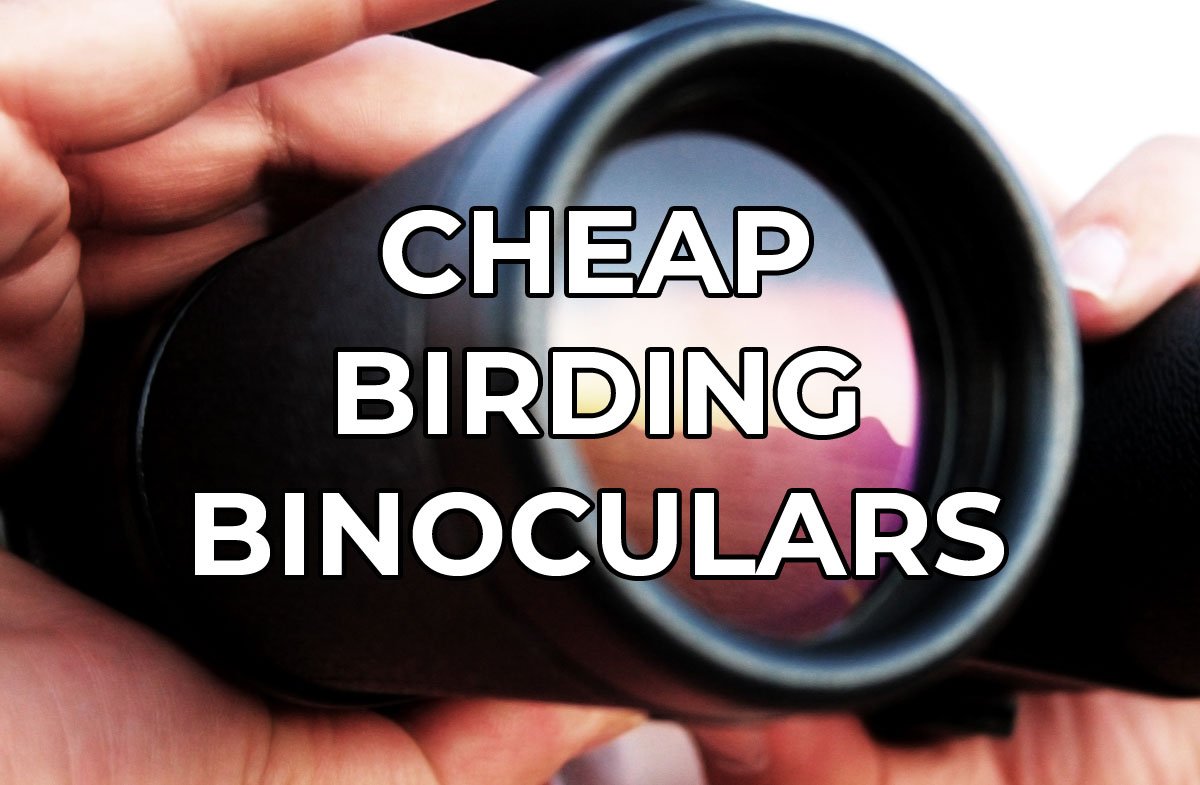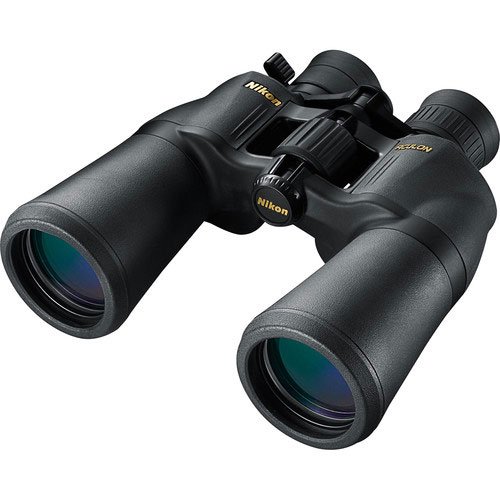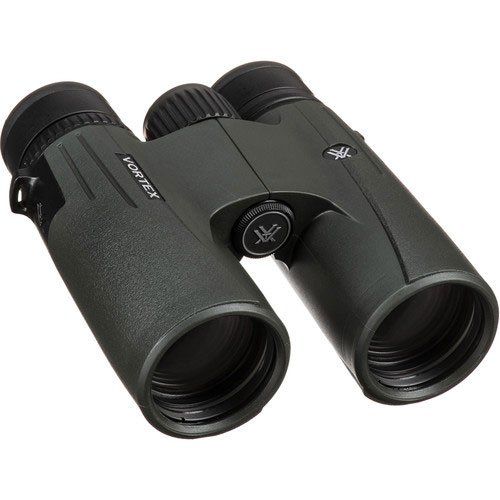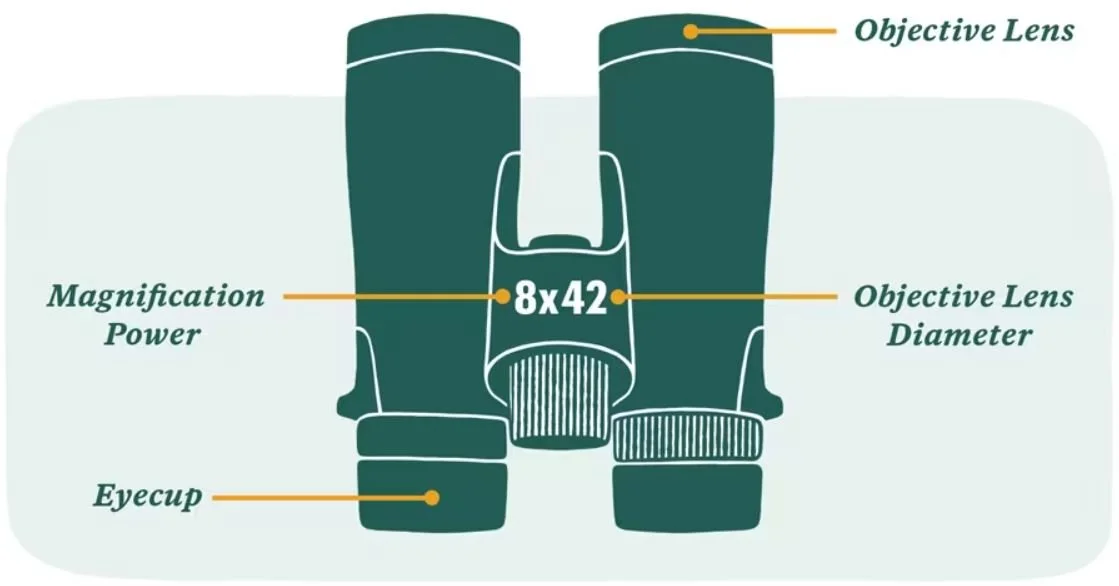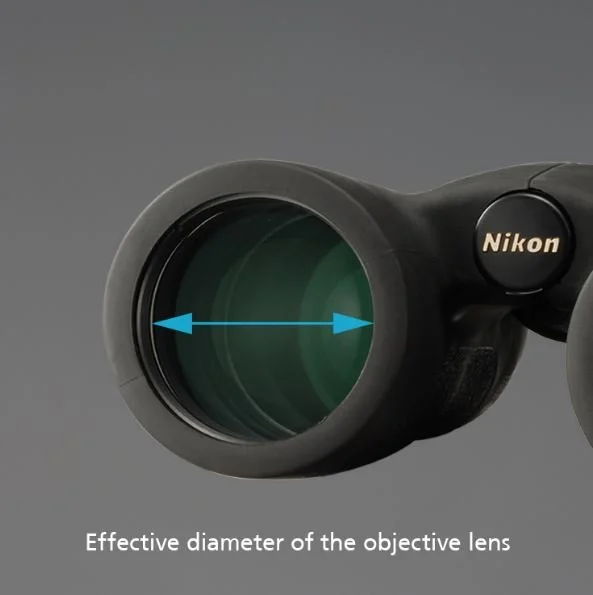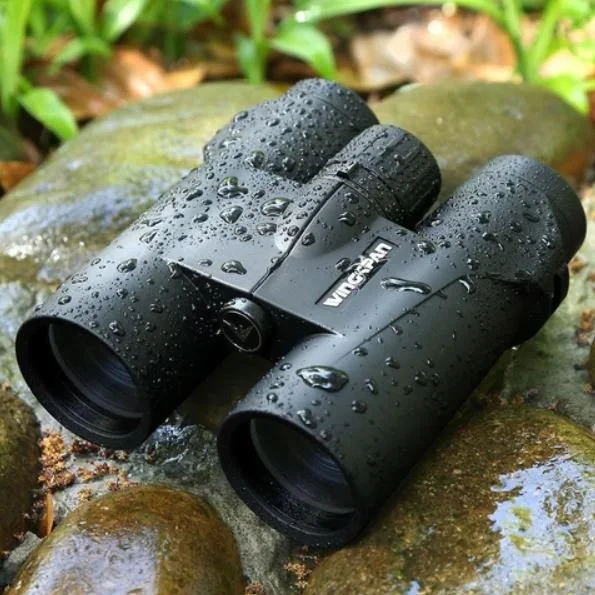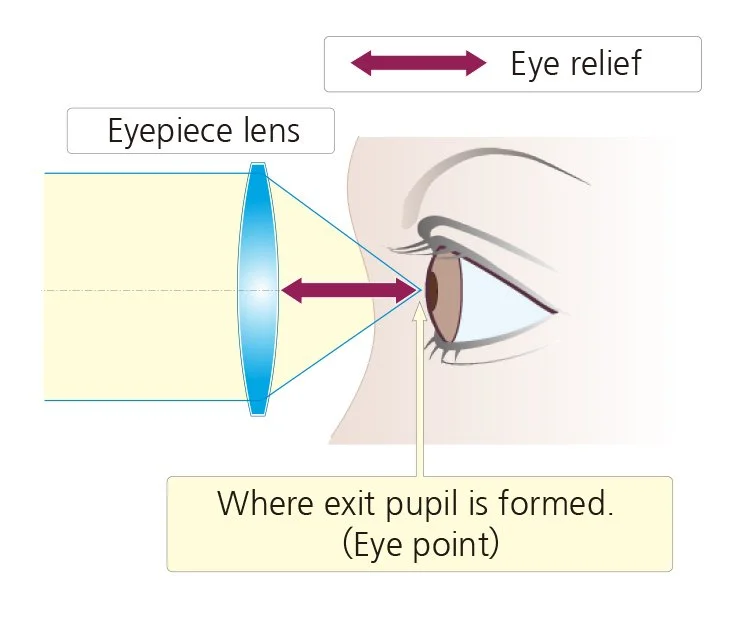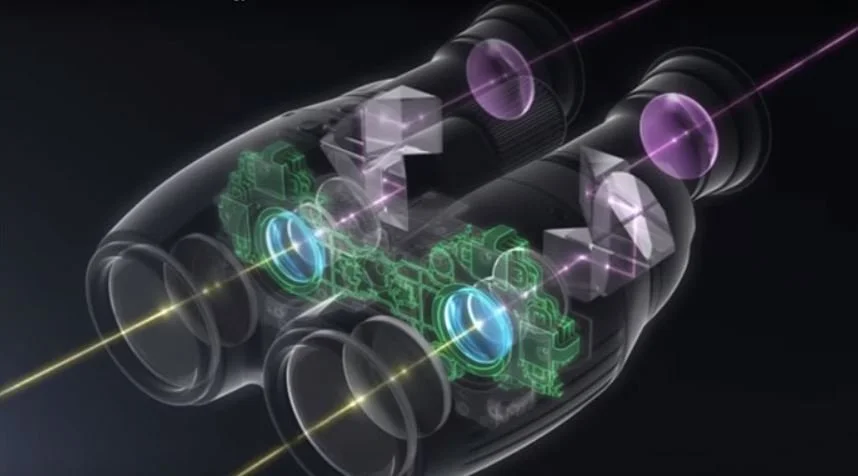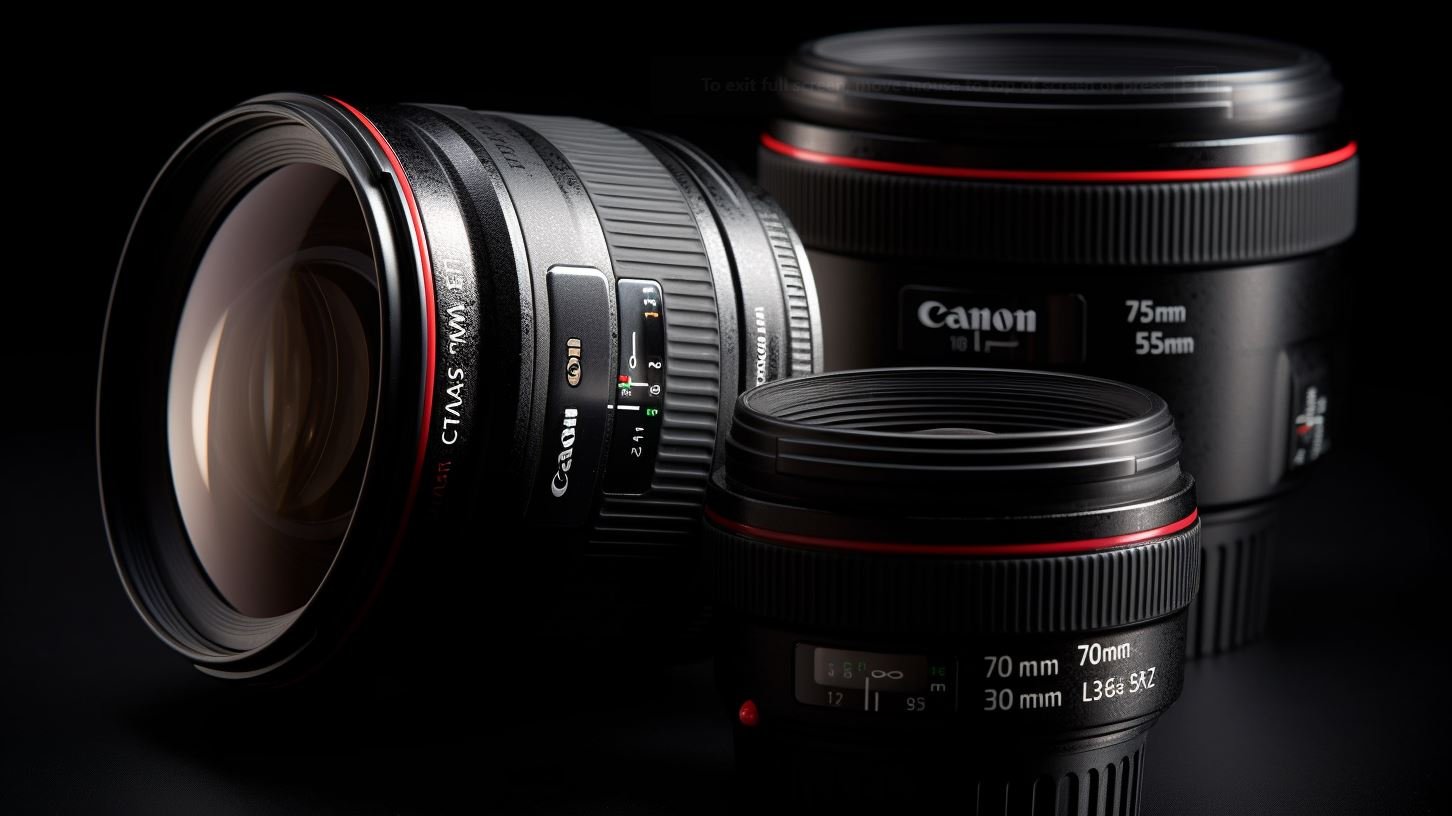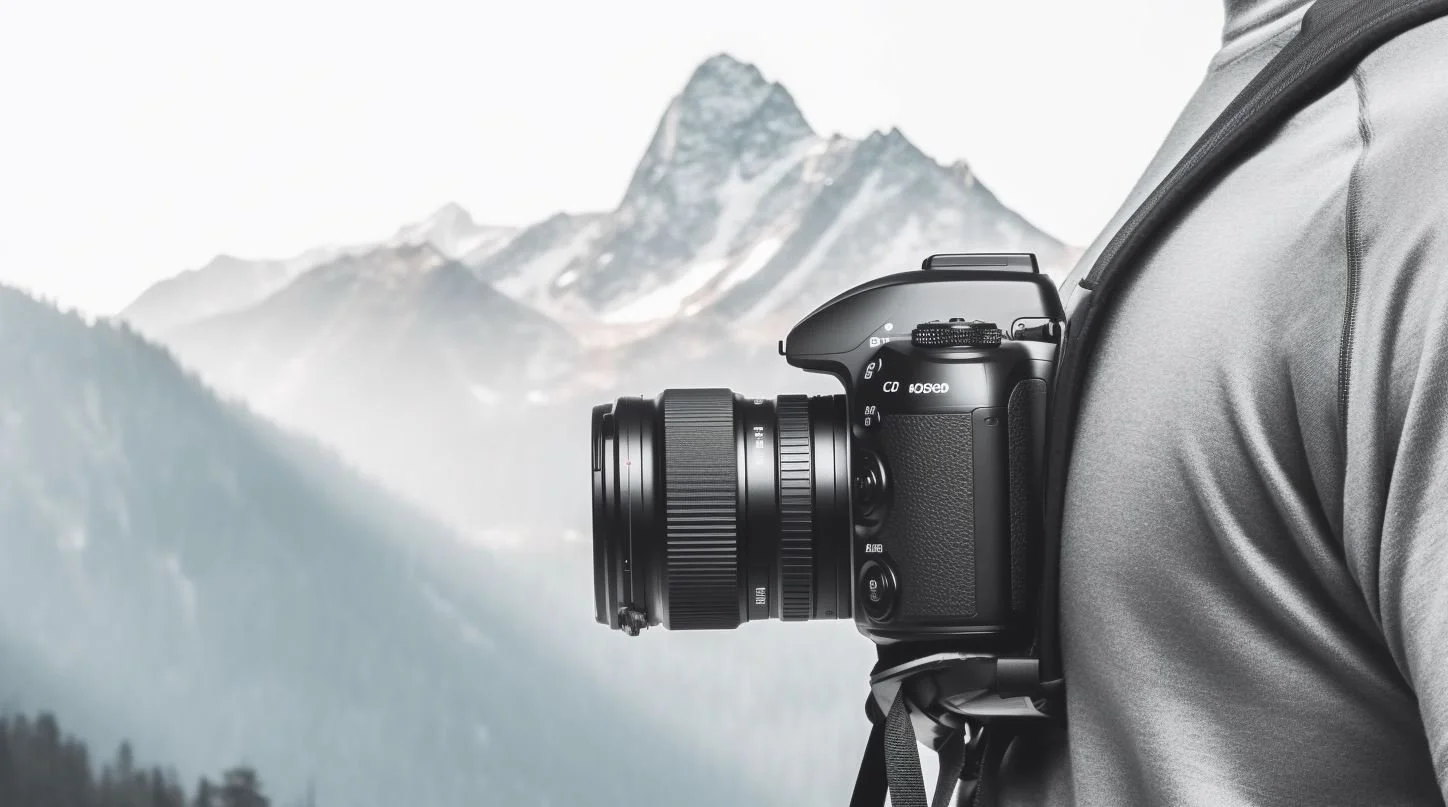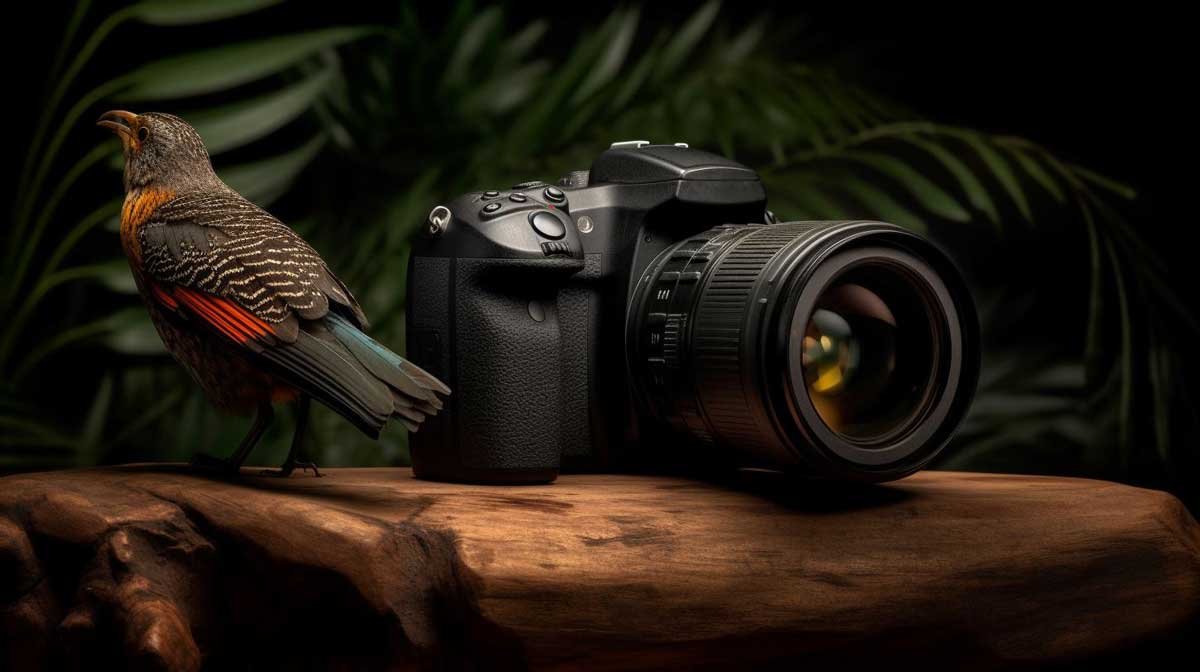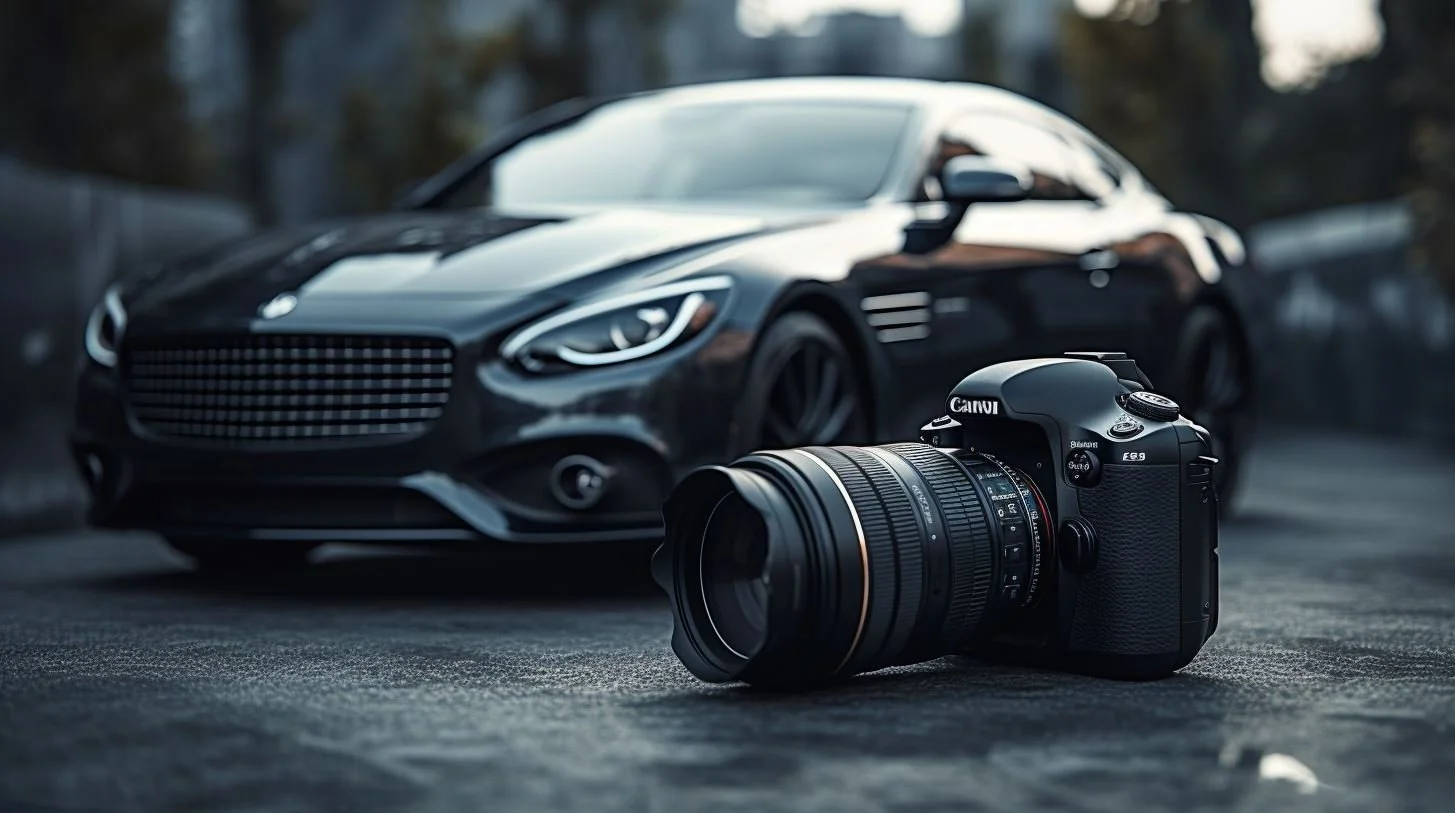Cheap Binoculars for Bird Watching
Discover affordable bird watching binoculars for any budget.
Binoculars are a crucial tool for bird watchers. They allow you to observe and identify birds from a distance, without disturbing them. However, buying a pair of binoculars can be a daunting task, especially if you're on a budget. With so many options available in the market, it can be hard to know which ones are worth your money.
To help you make an informed decision, we've compiled a list of the best cheap binoculars for bird watching. These binoculars are affordable, but they still provide excellent image quality and features that are essential for bird watching.
Cheap Binoculars for Bird Watching
Since “cheap” is a subjective term whose definition depends on your disposable income, below you’ll find affordable bird watching binoculars for several budgets.
The recommendations all fall within the best size binoculars for bird watching: objective lens size between 32mm and 42mm and a magnification power between 8x and 10x. These specifications offer a good balance between brightness, portability, and ease of use.
Cheap Binoculars for Bird Watching Recommendations:
Under $50: Bushnell Falcon 10x50 Binoculars
Under $100: Nikon 10x42 ProStaff 3S Binoculars
Under $150: Celestron Nature DX 8x42 Binoculars
Under $200: Nikon Aculon A211 10-22x50 Binoculars
Under $300: Vanguard 10x42 Endeavor ED Binoculars
Under $500: Vortex 8x42 Viper HD Binoculars
Best Under $50
The Bushnell Falcon 10x50 Binoculars are a popular choice for bird watching due to their affordable price and high magnification. In this overview, we'll take a closer look at the features and performance of the Bushnell Falcon 10x50 Binoculars for bird watching.
Features:
The Bushnell Falcon 10x50 Binoculars have a magnification of 10x and an objective lens diameter of 50mm, which provides a clear and bright image of birds. The 10x magnification is higher than most other affordable binoculars, which makes the Bushnell Falcon a great option for bird watchers who want to observe birds from a greater distance.
The binoculars have fully coated lenses, which provide a clear image even in low light conditions. The large focus knob makes it easy to adjust the focus and quickly find your target bird. The binoculars also have a durable rubber coating that provides a secure and comfortable grip.
Performance:
The Bushnell Falcon 10x50 Binoculars are easy to use and provide a clear and detailed image of birds. The high magnification allows bird watchers to observe birds from a greater distance, which is especially useful for observing birds that are difficult to approach.
Bottom Line:
The Falcon 10x50 Binoculars are a great option for beginner birders not wanting to spend much to get started. They’re easy to use, beginner friendly, and have fully coated lenses, a feature not often seen at this price point. They’re lightweight and easy to carry, making them a solid option for bird watchers who want to spend long hours in the field. Their rubber coating makes them durable while providing a secure and comfortable grip. Considering their features, the Falcon 10x50 binoculars are the best option at this price point.
| Magnification | Objective Lens | Weight | Lens Coating | Waterproof | ED Glass | Prism |
|---|---|---|---|---|---|---|
| 10x | 50mm | 26.98 oz / 764.88 g | Fully Coated | No | No | Porro |
Best Under $100
The Nikon 10x42 ProStaff 3S Binoculars are a high-quality option for bird watching due to their excellent image quality and durable design. In this overview, we'll take a closer look at the features and performance of the Nikon 10x42 ProStaff 3S Binoculars for bird watching.
Features:
The Nikon 10x42 ProStaff 3S Binoculars have a magnification of 10x and an objective lens diameter of 42mm, which provides a clear and detailed image of birds. The binoculars have fully multi-coated lenses (the top-tier lens coating), which provide a bright and clear image even in low light conditions.
The binoculars are also waterproof and fog-proof, which makes them suitable for bird watching in all weather conditions. The durable rubber coating provides a secure and comfortable grip, even in wet conditions.
The binoculars also have a large focus knob, which makes it easy to adjust the focus and quickly find your target bird. They also have long eye relief, which makes them comfortable to use for bird watchers who wear glasses.
Performance:
The Nikon 10x42 ProStaff 3S Binoculars provide excellent image quality and performance for bird watching. The fully multi-coated lenses provide a bright and clear image, which is essential for identifying and observing birds in detail.
The waterproof and fog-proof design makes the binoculars suitable for use in all weather conditions, which is important for bird watchers who spend long hours in the field. The durable rubber coating provides a secure and comfortable grip, which is especially useful for bird watchers who are carrying binoculars for long periods.
The large focus knob makes it easy to adjust the focus and quickly find your target bird, while the long eye relief ensures that the binoculars are comfortable to use for bird watchers who wear glasses.
Bottom Line:
Though the Nikon 10x42 ProStaff 3S Binoculars retail for over $100, they are often on sale for below. For that price, the amount of high-end and professional features Nikon has included is incredible. Fully multi-coated lenses, water and fog-proof design, durable build, and easy to use, there’s not much more you could ask for (besides image stabilization $$$).
| Magnification | Objective Lens | Weight | Lens Coating | Waterproof | ED Glass | Prism |
|---|---|---|---|---|---|---|
| 10x | 42mm | 20.3 oz / 575.5 g | Multi-Coated | Yes | No | Roof |
Best Under $150
The Celestron Nature DX 8x42 Binoculars are a popular choice for bird watching due to their affordable price, durable design, and excellent image quality. In this overview, we'll take a closer look at the features and performance of the Celestron Nature DX 8x42 Binoculars for bird watching.
Features:
The Celestron Nature DX 8x42 Binoculars have a magnification of 8x and an objective lens diameter of 42mm, which provides a bright and clear image of birds. The binoculars have fully multi-coated lenses, which provide a sharp and detailed image, even in low light conditions.
The binoculars are also waterproof and fog-proof, which makes them suitable for bird watching in all weather conditions. The durable rubber coating provides a secure and comfortable grip, even in wet conditions.
The binoculars also have a large focus knob, which makes it easy to adjust the focus and quickly find your target bird. The twist-up eyecups ensure that the binoculars are comfortable to use for bird watchers who wear glasses.
Performance:
The Celestron Nature DX 8x42 Binoculars provide excellent image quality and performance for bird watching. The fully multi-coated lenses provide a sharp and detailed image, which is essential for identifying and observing birds in detail.
The waterproof and fog-proof design makes the binoculars suitable for use in all weather conditions, which is important for bird watchers who spend long hours in the field. The durable rubber coating provides a secure and comfortable grip, which is especially useful for bird watchers who are carrying binoculars for long periods.
The large focus knob makes it easy to adjust the focus and quickly find your target bird, while the twist-up eyecups ensure that the binoculars are comfortable to use for bird watchers who wear glasses.
Bottom Line:
The Celestron Nature DX 8x42 Binoculars are almost identical in specifications to the Nikon 10x42 ProStaff 3S Binoculars (above): fully multi-coated lenses, water and fog-proof, durable build, and easy to use. However, this Celestron model has fully multi-coated optics and less magnification, which makes their image sharper and more stable when used handheld. If you’re between the two models and don’t have a tripod mount, go with the Celestron Nature DX 8x42.
| Magnification | Objective Lens | Weight | Lens Coating | Waterproof | ED Glass | Prism |
|---|---|---|---|---|---|---|
| 8x | 42mm | 22.2 oz / 629.4 g | Fully Multi-Coated | Yes | No | Roof |
Best Under $200
The Nikon Aculon A211 10-22x50 Binoculars are a versatile and affordable option for bird watching due to their variable magnification range and high-quality optics. In this overview, we'll take a closer look at the features and performance of the Nikon Aculon A211 10-22x50 Binoculars for bird watching.
Features:
The Nikon Aculon A211 10-22x50 Binoculars have a magnification range of 10x to 22x and an objective lens diameter of 50mm, which provides a clear and detailed image of birds at a variety of distances. The binoculars have fully multi-coated lenses, which provide a bright and clear image, even in low light conditions.
The binoculars are also lightweight and easy to carry, which makes them a great option for bird watchers who want to spend long hours in the field. The durable rubber coating provides a secure and comfortable grip.
The binoculars also have a large focus knob, which makes it easy to adjust the focus and quickly find your target bird. The adjustable eyecups ensure that the binoculars are comfortable to use for bird watchers who wear glasses.
Performance:
The Nikon Aculon A211 10-22x50 Binoculars provide excellent image quality and performance for bird watching. The variable magnification range allows bird watchers to observe birds at different distances, which is especially useful for observing birds that are difficult to approach.
The fully multi-coated lenses provide a bright and clear image, which is essential for identifying and observing birds in detail. The lightweight and easy-to-carry design of the binoculars makes them suitable for bird watchers who want to spend long hours in the field.
The durable rubber coating provides a secure and comfortable grip, which is especially useful for bird watchers who are carrying binoculars for long periods. The large focus knob and adjustable eyecups ensure that the binoculars are easy and comfortable to use for bird watchers of all levels.
Bottom Line:
The Nikon Aculon A211 10-22x50 Binoculars are an excellent option for bird watching, especially when combined with a tripod or other stabilization method. Once stabilized, you’ll be able to view intimate details of birds at medium range and extend your practical reach for distant birds. However, to make the variable magnification range more affordable, Nikon opted out of waterproofing the Aculon A211.
| Magnification | Objective Lens | Weight | Lens Coating | Waterproof | ED Glass | Prism |
|---|---|---|---|---|---|---|
| 10-22x | 50mm | 33.9 oz / 961.1 g | Multi-Coated | No | No | Porro |
Best Under $300
The Vanguard 10x42 Endeavor ED Binoculars are a high-end option for bird watching due to their exceptional image quality and durable design. In this overview, we'll take a closer look at the features and performance of the Vanguard 10x42 Endeavor ED Binoculars for bird watching.
Features:
The Vanguard 10x42 Endeavor ED Binoculars have a magnification of 10x and an objective lens diameter of 42mm, which provides a clear and detailed image of birds. The binoculars have extra-low dispersion (ED) glass and fully multi-coated lenses, which provide a bright and clear image with high contrast and accurate color reproduction.
The binoculars are also waterproof and fog-proof, which makes them suitable for bird watching in all weather conditions. The durable rubber coating provides a secure and comfortable grip, even in wet conditions.
The binoculars also have a large focus knob, which makes it easy to adjust the focus and quickly find your target bird. The twist-out eyecups ensure that the binoculars are comfortable to use for bird watchers who wear glasses.
Performance:
The Vanguard 10x42 Endeavor ED Binoculars provide exceptional image quality and performance for bird watching. The extra-low dispersion (ED) glass and fully multi-coated lenses provide a bright and clear image with high contrast and accurate color reproduction, which is essential for identifying and observing birds in detail.
The waterproof and fog-proof design makes the binoculars suitable for use in all weather conditions, which is important for bird watchers who spend long hours in the field. The durable rubber coating provides a secure and comfortable grip, which is especially useful for bird watchers who are carrying binoculars for long periods.
The large focus knob makes it easy to adjust the focus and quickly find your target bird, while the twist-out eyecups ensure that the binoculars are comfortable to use for bird watchers who wear glasses.
| Magnification | Objective Lens | Weight | Lens Coating | Waterproof | ED Glass | Prism |
|---|---|---|---|---|---|---|
| 10x | 42mm | 25.8 oz / 730.28 g | Fully Multi-Coated | Yes | Yes | Roof |
Best Under $500
The Vortex 8x42 Viper HD binoculars are an excellent choice for bird watching enthusiasts. These binoculars have several features that make them well-suited for birding:
Optical Performance:
The Viper HD binoculars offer clear, sharp, and bright images with excellent color reproduction, even in low-light conditions. The high-density extra-low dispersion glass and anti-reflective coatings on all air-to-glass surfaces provide high-resolution and color-accurate images, making it easy to identify birds in the field.
Design:
The Viper HD binoculars are designed with bird watchers in mind. They are lightweight and compact, making them easy to carry and handle for extended periods. The binoculars are also designed to be rugged and durable, with a rubber-armored chassis that provides a secure grip and protection against bumps and drops. The open bridge design is comfortable to hold, and the adjustable eyecups allow for easy viewing, even for those who wear glasses.
Ease of Use:
The Viper HD binoculars are easy to use, with a smooth focus wheel that allows for quick and precise adjustments. The center focus knob is easy to reach and can be adjusted with just one finger. The binoculars also come with a comfortable neck strap and a carrying case for easy transport.
Bottom Line:
The Vortex 8x42 Viper HD Binoculars are pro-level bird watching optics. They feature ED glass, fully multi-coated optics, O-ring sealed and argon filled optical tubes for elite water proofing, and are extremely lightweight for long days out in the field.
| Magnification | Objective Lens | Weight | Lens Coating | Waterproof | ED Glass | Prism |
|---|---|---|---|---|---|---|
| 8x | 42mm | 24.5 oz / 694.6 g | Fully Multi-Coated | Yes | Yes | Roof |
What to Look for When Buying Binoculars for Bird Watching
The best size binoculars for bird watching are those with an objective lens size between 32mm and 42mm and a magnification power between 8x and 10x. These specifications offer a good balance between brightness, portability, and ease of use.
However, don’t just take my word for it. Take the time to read about the following important birding binocular features to determine what the best birding binoculars are in your opinion:
Objective Lens Size
One of the most important factors to consider when choosing binoculars for bird watching is the size of the objective lens. The objective lens is the larger lens at the end of the binoculars that collects light and creates an image.
The objective lens size is measured in millimeters, and generally, the larger the objective lens, the brighter the image will be. However, larger objective lenses also mean that the binoculars will be heavier and bulkier, making them more difficult to carry around.
For bird watching, the best objective lens size falls between 32mm and 42mm. This range strikes a balance between brightness and portability, making it easy to carry around and use for extended periods without causing eye fatigue.
Magnification Power
Binocular magnification refers to how much larger the object appears when viewed through the binoculars than it does to the naked eye. It is typically represented by a number, such as 8x, 10x, or 12x, which indicates how many times closer the object appears when viewed through the binoculars.
For example, if the magnification is 8x, the object will appear eight times closer than it does to the naked eye.
Click to enlarge.
Higher magnification can be useful for observing details on distant objects, but it can also lead to shakier images, making it harder to track moving birds, while lower magnification may make it more difficult to see small details on distant birds.
When it comes to bird watching, magnification power between 8x and 10x provides a good balance between image stability and field of view, making it easier to locate and track birds in their natural habitat.
Weight & Portability
As we mentioned earlier, the size and weight of the binoculars are essential considerations for bird watching. Binoculars that are too heavy or bulky can be tiring to carry around, especially on long hikes, making them less practical for bird watching.
The ideal weight for bird watching binoculars should be under 2 pounds (900 grams) to ensure maximum portability and ease of use. Compact binoculars are often more lightweight and easier to carry around, but they may sacrifice image quality in exchange for portability.
Durability
Since bird watching often takes place in outdoor environments, the durability of the binoculars is a crucial factor to consider.
Look for binoculars that are weatherproof, shockproof, and waterproof, especially if you plan to do bird watching in wet and humid environments.
Lens Coatings
The type of lens coating used on binoculars can have a significant impact on image quality, brightness, and color accuracy, so it's important to choose a pair of binoculars with high-quality lens coatings that fit your needs and budget.
A high-quality lens coating will ensure that the image is sharp, clear, and bright, even in low light conditions.
The coatings on the lenses also affect how much light is transmitted, how much glare and reflection is reduced, and how much color distortion is eliminated.
There are several different types of lens coatings used on binoculars that can affect image quality, brightness, and color accuracy. Some of the most common binocular lens coatings include:
Coated lenses: These lenses have a single layer of coating on at least one surface of the lens to reduce reflection and glare. Coated lenses are typically found on entry-level binoculars and provide some improvement in image quality over uncoated lenses.
Fully-coated lenses: Fully-coated lenses have multiple layers of coating on all air-to-glass surfaces of the binoculars, which improves light transmission, color accuracy, and contrast. Fully-coated lenses are a step up from coated lenses and are found on mid-range binoculars.
Multi-coated lenses: Multi-coated lenses have multiple layers of coating on some air-to-glass surfaces, typically the outer lenses, which reduces reflection and glare even further than fully-coated lenses. Multi-coated lenses provide better image quality and color accuracy than fully-coated lenses and are typically found on high-end binoculars.
Fully multi-coated lenses: Fully multi-coated lenses have multiple layers of coating on all air-to-glass surfaces, including the interior lenses. Fully multi-coated lenses provide the best image quality, brightness, color accuracy, and contrast, and are typically found on premium binoculars.
In addition to these coatings, there are also special coatings that can be added to the lenses, such as anti-reflective coatings, which reduce reflection and glare even further, and hydrophobic coatings, which repel water and oils from the lenses.
Look for binoculars with multi-coated or fully multi-coated lenses, as they will offer the best image quality.
Prism Type
There are several types of prisms used in binoculars to transmit and invert the image. The most common types are:
Porro Prism: The Porro prism was the first prism design used in binoculars and is still commonly used today. It uses two right-angled prisms to bend the light path and produce an upright image. Porro prism binoculars tend to be bulkier but offer a wider field of view and are often less expensive than other prism types.
Pros: • Offers a wider field of view than other prism types • Provides a stereoscopic image • Typically less expensive than other prism types
Cons: • Bulkier and heavier design compared to other prism types • Not as durable as other prism types, as the prisms are often held together by glue
Roof Prism: Roof prism binoculars use a complex prism system to produce an upright image. They are more compact than Porro prism binoculars and have a straight barrel design. Roof prism binoculars tend to be more expensive than Porro prism binoculars of similar quality.
Pros: • More compact and lightweight design compared to Porro prism binoculars • More durable, as the prisms are often held together by mechanical means rather than glue • Can offer superior image quality compared to Porro prism binoculars of similar quality
Cons: • Generally more expensive than Porro prism binoculars • Narrower field of view than Porro prism binoculars • More complex design can lead to more potential issues with image quality
Schmidt-Pechan Prism: The Schmidt-Pechan prism is also a type of roof prism and is commonly used in compact binoculars. It uses a combination of reflective and refractive surfaces to produce an upright image.
Pros: • Compact design and lightweight • Can offer excellent image quality with a wide field of view • Often used in high-end compact binoculars
Cons: • More expensive than Porro prism binoculars • Can be more difficult to manufacture and repair compared to other prism types
Abbe-Koenig Prism: The Abbe-Koenig prism is a type of roof prism that uses a reflective surface to produce a more compact design. They are commonly used in high-end binoculars and offer superior image quality, but are more expensive.
Pros: • Compact design with excellent image quality • Can offer a wide field of view and high magnification • Superior to other prism types in low-light conditions
Cons: • The most expensive type of prism used in binoculars • More complex design can make it more difficult to manufacture and repair
Each type of prism has its advantages and disadvantages, and the choice between them often comes down to personal preference, budget, and desired features.
Eye Relief
Binocular eye relief refers to the distance between the eyepiece and your eyes when you are using the binoculars. It is an essential factor to consider, particularly for individuals who wear glasses or who need more space between their eyes and the binoculars for comfort.
If the eye relief is too short, it may be difficult to see the entire field of view, particularly if you are wearing glasses. Additionally, if the eyepiece is too close to your eyes, it can be uncomfortable and cause eye fatigue, particularly when using the binoculars for extended periods.
The ideal eye relief distance depends on personal preferences and whether you wear glasses.
Generally, an eye relief of 14-16mm is considered suitable for individuals who wear glasses.
For those who do not wear glasses, an eye relief of around 10-12mm may be adequate.
Field of View
The field of view refers to the area visible through the binoculars at a certain distance. The wider the field of view, the more area you can see through the binoculars.
A wider field of view is useful when observing birds in their natural habitat, as it allows you to track moving birds more easily. However, wider fields of view can often result in lower magnification and may not provide as much detail on distant birds.
For bird watching, a field of view of around 300 to 400 feet at 1,000 yards is ideal. This range offers a good balance between a wide field of view and sufficient magnification to observe details on distant birds.
Image Stabilization
Image stabilization is a feature that can help to minimize shaky images caused by hand movements. This feature is particularly useful when observing birds in flight or when using higher magnification binoculars.
There are two primary types of image stabilization in binoculars: optical image stabilization and electronic image stabilization.
Optical image stabilization: Binoculars with optical image stabilization use a set of internal prisms to compensate for hand movements and stabilize the image. When the binoculars detect movement, the prisms move in the opposite direction to correct the motion. Optical image stabilization is highly effective and produces clear stable images, but it can add weight and cost to the binoculars.
Electronic image stabilization: Binoculars with electronic image stabilization use a built-in gyroscope or accelerometer to detect hand movements and electronically stabilize the image. Electronic image stabilization is less effective than optical image stabilization, but it is less expensive and adds less weight to the binoculars. Electronic image stabilization can also offer additional features such as automatic panning and tilt correction.
While image stabilization can be a useful feature, it's important to note that it can add extra weight and cost to the binoculars. For bird watchers who primarily observe stationary birds or who use lower-magnification binoculars, image stabilization may not be necessary.
Price
The cost of binoculars can vary widely depending on the features, quality, and brand. However, as a general rule, you can expect to pay more for binoculars with higher-quality lenses, coatings, and image stabilization.
For bird watching, a good pair of binoculars can be found for between $200 and $500. While it may be tempting to go for the cheapest option, it's important to remember that higher-quality binoculars will often provide better image quality and last longer, making them a worthwhile investment for serious bird watchers.
Summary
Choosing the best binoculars for bird watching depends on several factors, including objective lens size, magnification power, weight and portability, durability, lens coatings, eye relief, field of view, and image stabilization.
Binoculars with an objective lens size between 32mm and 42mm and a magnification power between 8x and 10x are typically best for bird watching. These sizes provide a balance between brightness, portability, and ease of use.
Additionally, it's important to choose binoculars that are durable, weatherproof, and have high-quality lens coatings. Look for binoculars with long eye relief and a field of view of around 300 to 400 feet at 1,000 yards. Image stabilization can be useful for reducing shakiness, but it can add weight and cost to the binoculars.
Overall, investing in a good pair of binoculars is essential for anyone serious about bird watching. With the right pair of binoculars, you can observe birds in greater detail, enhance your viewing experience, and make the most of your time spent in nature.
Support Acoustic Nature
If you enjoyed this post and would like to help support Acoustic Nature, please consider "buying me a coffee" or becoming a Patreon with the buttons below.
As a thank you for your support, Patreon supporters receive a copy of Field Recording For Beginners, exclusive access to the full Behind The Sounds video series, nature sound library downloads, and more.
If you are unable to support the site financially, please share this post with others, or leave a comment below letting me know you enjoyed this post! Both are free and help the website grow. Thank you ♫
Thanks for reading,
-Jared

